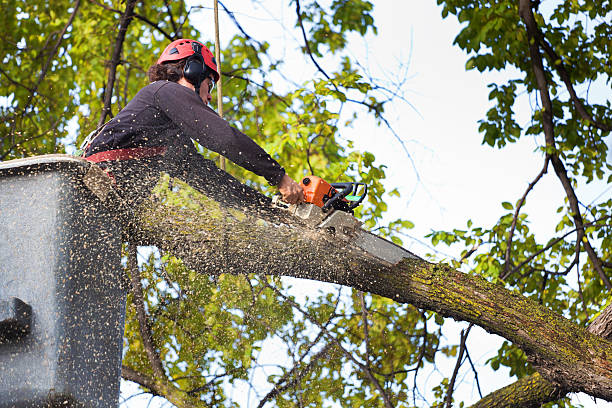Trees are living things that make major contributions to the ecosystem and are not only mute observers of our surroundings. Nonetheless, there are times when a tree needs to be removed. This thorough guide seeks to clarify the rationale behind tree removal, the techniques used, and the vital safety precautions associated with the procedure.
I. Reasons for Tree Removal
a. Disease and Pest Infestation:
Like all other living things, trees can get sick or get infested with pests. Removal becomes essential to stop the disease from spreading to neighboring plants when a tree’s health is irreversibly damaged.
b. Structural Instability:
A tree with a compromised structure poses a threat to its surroundings. Factors such as storm damage, lightning strikes, or natural aging can weaken a tree’s structural integrity. In such cases, removal is crucial to prevent potential hazards like falling branches or even the entire tree.
c. Dead or Dying Trees:
In addition to being ugly, dead or decaying trees may also be dangerous. They can shatter easily and fall easily because to their weakness, which can result in damage to property or even worse, injury to people.
d. Encroachment on Structures:
Trees may find themselves invading homes, roadways, or utility lines as cities grow and landscapes shift. Tree removal is frequently the most practical course of action in these situations to prevent property damage.
e. Landscaping and Construction:
When landscaping or construction projects require clearing space, tree removal becomes an integral part of the process. Proper planning and assessment are crucial to minimizing environmental impact and adhering to regulations.
II. Methods of Tree Removal
a. Professional Arborist Services:
Often, the safest and most efficient method of tree removal is to hire a certified arborist. Arborists are qualified to evaluate a tree’s health, choose the best removal technique, and carry out the work precisely.
b. Felling:
Felling involves cutting down a tree in a controlled manner. This method is suitable for open spaces with ample room for the tree to fall without causing damage. Professional tree removal services use specialized equipment and techniques to ensure a safe and controlled descent.
c. Sectional Tree Removal:
In urban or confined spaces, sectional tree removal is employed. This method involves carefully dismantling the tree in sections, starting from the top. Each section is lowered with the help of ropes and specialized equipment to prevent damage to nearby structures.
d. Stump Grinding:
After the tree is removed, the stump remains a potential hazard and an obstacle for future landscaping. Stump grinding is a method used to grind the stump below ground level, eliminating tripping hazards and facilitating the planting of new vegetation.
e. Crane-Assisted Tree Removal:
For large or dangerously positioned trees, crane-assisted removal is utilized. This method involves using a crane to carefully lift and lower tree sections, ensuring precision and minimizing the risk of damage to surrounding structures.
III. Safety Measures in Tree Removal
a. Professional Expertise:
Tree removal is a task that calls for specific expertise. Employing a professional tree removal company or certified arborist guarantees that the work will be done precisely and in accordance with safety regulations.
b. Risk Assessment:
Before any tree removal activity, a thorough risk assessment should be conducted. This includes evaluating the tree’s condition, potential hazards, and the surrounding environment to plan the removal process accordingly.
c. Protective Gear:
Safety should always be a priority. Workers involved in tree removal should wear appropriate protective gear, including helmets, gloves, safety glasses, and steel-toed boots to minimize the risk of injuries.
d. Proper Equipment:
The use of proper equipment is essential for a safe tree removal process. Chainsaws, ropes, and rigging equipment must be in good condition and used by trained professionals to ensure the controlled removal of the tree.
e. Communication and Coordination:
Effective communication and coordination among the removal team members are critical. To guarantee a seamless and accident-free operation, all parties involved should be informed of the plan, potential risks, and safety precautions.
Conclusion
Comprehending tree removal entails being aware of the motivations behind it, the techniques used, and the safety precautions put in place to keep the environment and the workers safe. Tree removal is a delicate process that needs careful planning and execution, regardless of the reason—disease, structural instability, or the need for urban development. We can make sure that tree removal is done responsibly, reducing risks, and maintaining the harmony between human needs and environmental conservation, by putting safety first and obtaining professional assistance.


